Fallen soldiers deserve more
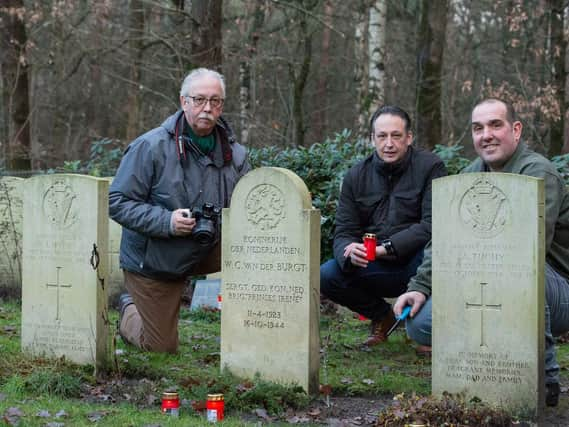

Recently the Lancaster Guardian received a request for further information from correspondent Tim Edwards about a war grave in Overloon War cemetery in the Netherlands.
The information the cemetery had indicated Lance Corporal George Chisholme was from Lancaster.
Advertisement
Hide AdAdvertisement
Hide AdHe was on a Douglas Dakota MKIII, KG444 YS-DJ, from 271 Sun, which crashed in the Dutch town of Sint Anthonis on September 21, 1944.
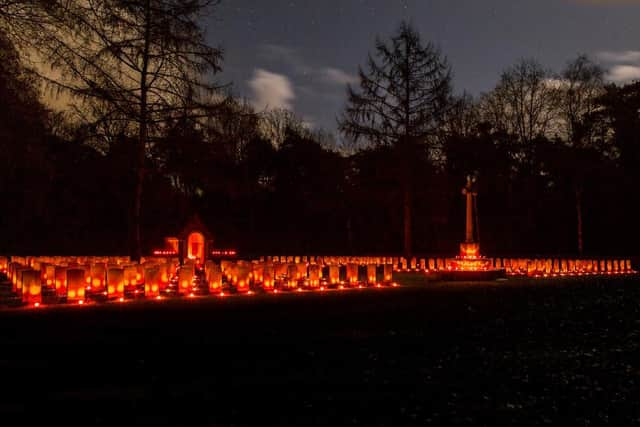

He was killed along with Lionel Abbott and Roy Abbott.
They had their first grave in Holland close to the house of the Van Berlo family.
A re-interment was carried out on May 28, 1947 to the new Commonwealth War Gravs Commission’s (CWGC)cemetery in Overloon.
Following this article the Lancaster Guardian was contacted by a group called Overloon War Chronicles consisting of 18 people, trying to find information on the 281 men buried at the Overloon Cemetery; 280 Commonwealth service personnel and one Dutch.
Advertisement
Hide AdAdvertisement
Hide Ad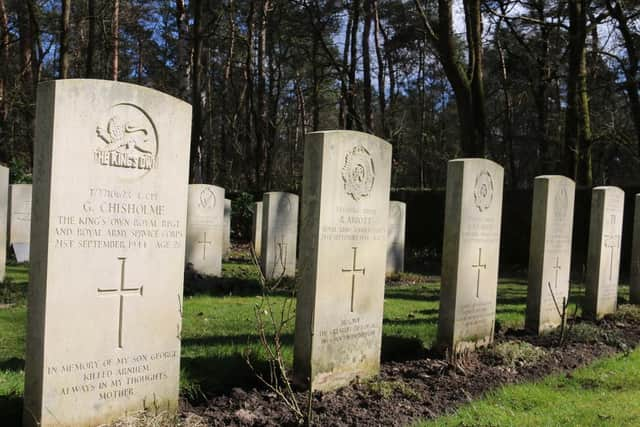

The group wants want to add a face and some background detail to each grave.
Members Oscar Huisman, 51, and Leo Janssen, 66, believe that simply remembering these men once a year is not enough.
“If it were not for them,” says Oscar Huisman, “we would all be speaking German now.”
Besides Huisman and Janssen, the Overloon War Cemetery work group includes enthusiastic amateur archivists Tonnie Ebben, Iwan van Dijk, Arno van Dijk and Piet Peters.
Advertisement
Hide AdAdvertisement
Hide Ad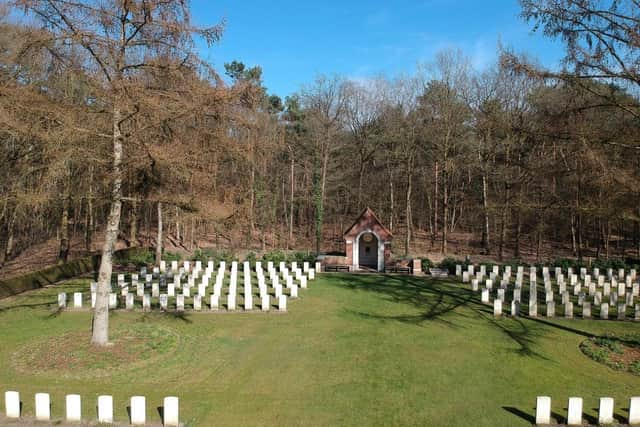

“Our goals are simple,” said Oscar Huisman, “first a photograph, second the story behind it.”
Third, the adoption of the graves. Shortly after starting the project, the group welcomed Sue Enyon, Lorie McCoffee, Roswitha Keizers and Jan van den Oever.
Leo Janssen said: “We think that these guys, who died for our freedom, disserve much more than a cold tombstone.
“Some years ago we started to put candle on each grave on Christmas eve.
Advertisement
Hide AdAdvertisement
Hide Ad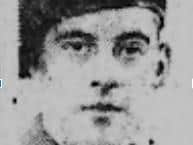

“Still, this was not enough. We started a foundation where we try to get pictures for each grave, most of the time we need relatives to get these.
“The second goal is to get background stories: what happened where, operation reports, diaries and letters.
“The third goal is to start an adoption programme again.
“In the 40s, 50s and 60s some of the graves were adopted by mostly local people.
“They placed flowers on the graves and visited the spot several times a year.
“This programme fizzled out over the years.
Advertisement
Hide AdAdvertisement
Hide Ad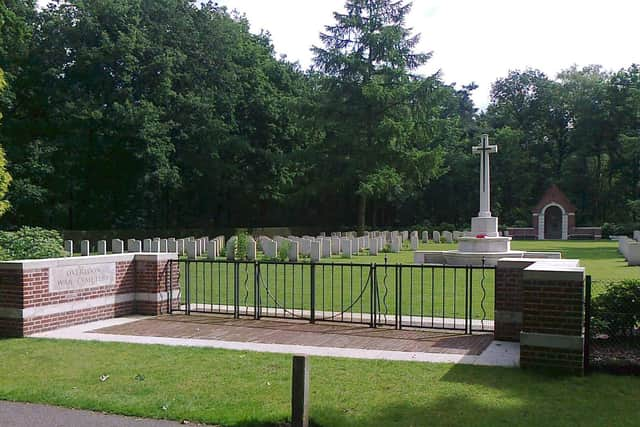

“During our running project, we got so many requests for adoption that we are considering restarting this programme.
“On our cemetery we have the graves of Lance Corporal George Chisholme, service number T/3710623, Driver Roy Abbott, service number T/14438865 and Driver Lionel Henry Samuel Abbott, service number T/14439683.
“Our plans are growing day by day. Besides the above mentioned three goals, we intend to raise a study group, a study room in the new, to be realized museum, offering an open archive and so on.
“The Overloon War Museum that was realised shortly after the war, does not show the information about the Battle of Overloon, as they should do.
Advertisement
Hide AdAdvertisement
Hide Ad“This war, also called ‘The Forgotten Battle’”should remain in the Overloon history, as it is part of it.
“Overloon was completely destroyed after this battle.
“Two thousand five hundred allied soldiers were killed, 600 civilians and an unknown number of Germans.”
As children, both Janssen and Huisman developed a fascination for the war.
Janseen’s interest lay with planes while Huisman was fascinated by the personal stories of the war.
Advertisement
Hide AdAdvertisement
Hide Ad“My father was a blacksmith in Stevensbeek,” says Leo Janssen. “The Germans forced him to cut crashed planes into pieces, he had no choice.
“The cut parts then went to German factories to produce new war materials. My father did not like to talk about this in later life, as he was not at all proud of his wartime experience.”
Like all the other members of the group, Huisman has studied the war in detail.
“Some of the historical facts are no longer recalled by people in Overloon,” he says.
Advertisement
Hide AdAdvertisement
Hide Ad““We must keep the history alive. Having read about the American initiative in Margraten cemetery, where volunteers searched for more than 8,000 pictures, I am sure that something similar should be possible for the 281 graves in Overloon. This is also about the pride I have in my hometown.”
During the Battle of Overloon, in October 1944, 2,500 allied forces and 600 civilians were killed.
The number of Germans killed has, so far, never been confirmed.
In the Overloon War Cemetery are buried 281 men, mainly from the UK.
Advertisement
Hide AdAdvertisement
Hide Ad“Records show that the majority of the soldiers were not killed in the Overloon area,” says Oscar Huisman.
“They come from more than 20 temporary cemeteries. Some bodies were even reburied several times.”
“In the process,” says Leo Janssen, “lots of information disappeared or got lost. Dog tags (identity discs) became unreadable in the ground or were removed. Strangely enough, there is now a trade in these relics.”
As Oscar Huisman started his search for photographs, he was lucky from the beginning, finding lots of information on one specific soldier: Major Anthony Frith ‘Toby’ Smith. He died, aged just 36, on October 14, 1944, during the Battle of Overloon, near the Loobeek (known as the ‘blood stream’).
Advertisement
Hide AdAdvertisement
Hide AdPurely by chance, Huisman found on YouTube a trailer for a film - ‘In the Hour of Victory’ - about Major Smith.
“There is a book as well,” he says, “written by Smith’s grandson. I found his address and, over a three week period, I received messages from him containing lots of information. It could not have been better.
“At the moment,” said Huisman, “we have some 34 pictures…but the first 34 are no doubt much easier to find than the last 24.
“That is why we want to get in touch with as many people as possible to secure more information on this subject.”
Advertisement
Hide AdAdvertisement
Hide Ad“Some kind families adopted graves in 1947,” says Leo Janssen, “mainly to show their respect and gratitude.
“They may have some useful information for us, although we should really have started this search some 50 years earlier, as there now hardly any direct witnesses from that time.”
Ideally, the photographs and their associated stories should have a permanent spot on the graves. This will not be easy, as the cemetery is owned by the CWGC and it is forbidden to place any permanent objects there.
The CWGC wants to keep the cemetery looking solemn and subdued, not to mention neatly maintained, and all CWGC cemeteries look the same.
Advertisement
Hide AdAdvertisement
Hide AdLeo Janssen is still negotiating with the commission to find the best solution to this question.
If you can help the workgroup in any way visit https://www.facebook.com/WerkgroepOverloonWarCemetery/ or write to: Leo Janssen, Stevensbeekseweweg 17d,5825JB Overloon. Telephone: 0031 478 582175 or mobile 0031 6 53693428.
*Original article by Irma van Teunenbroek
Translated by Leo Janssen and Ken Reynolds.